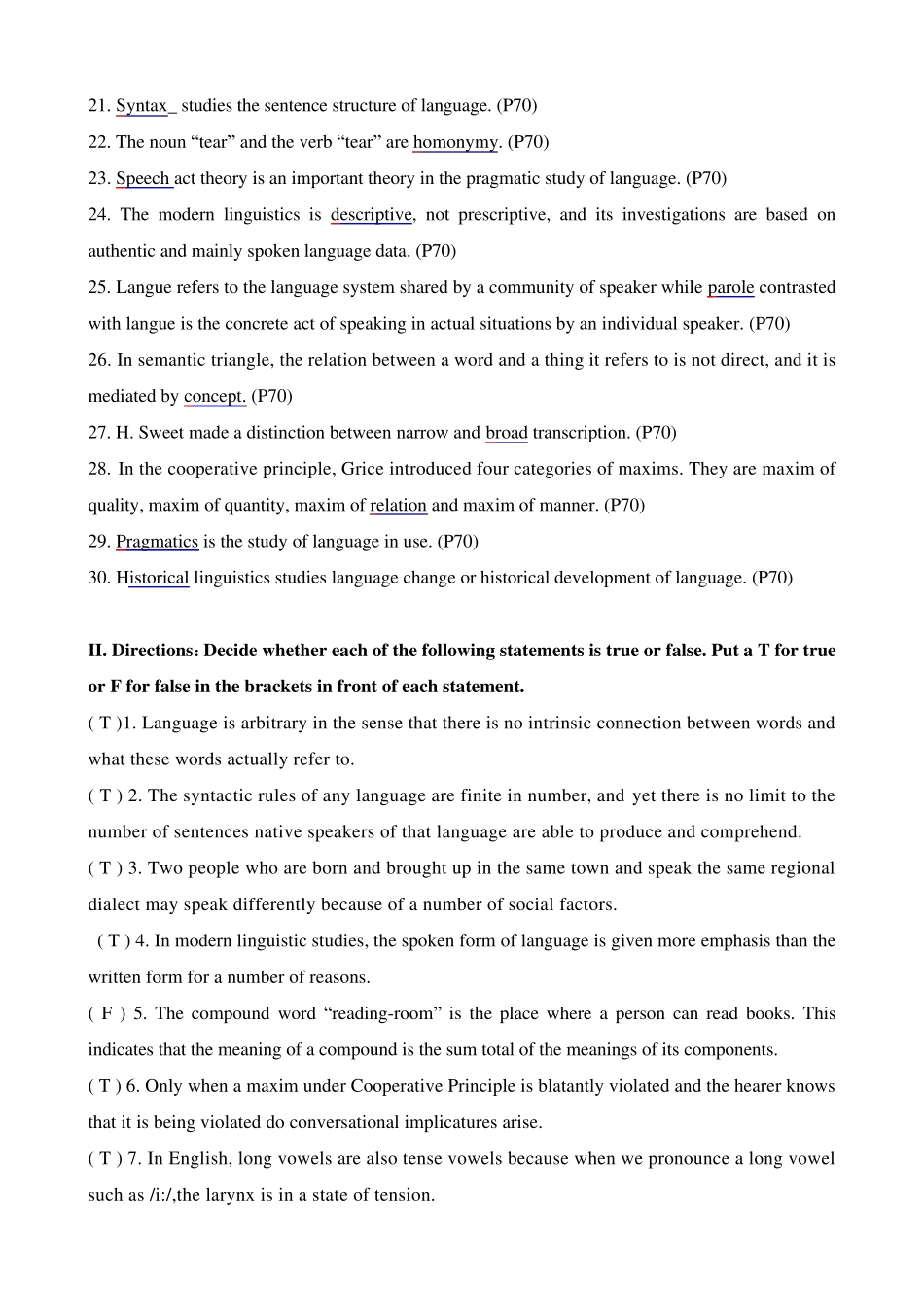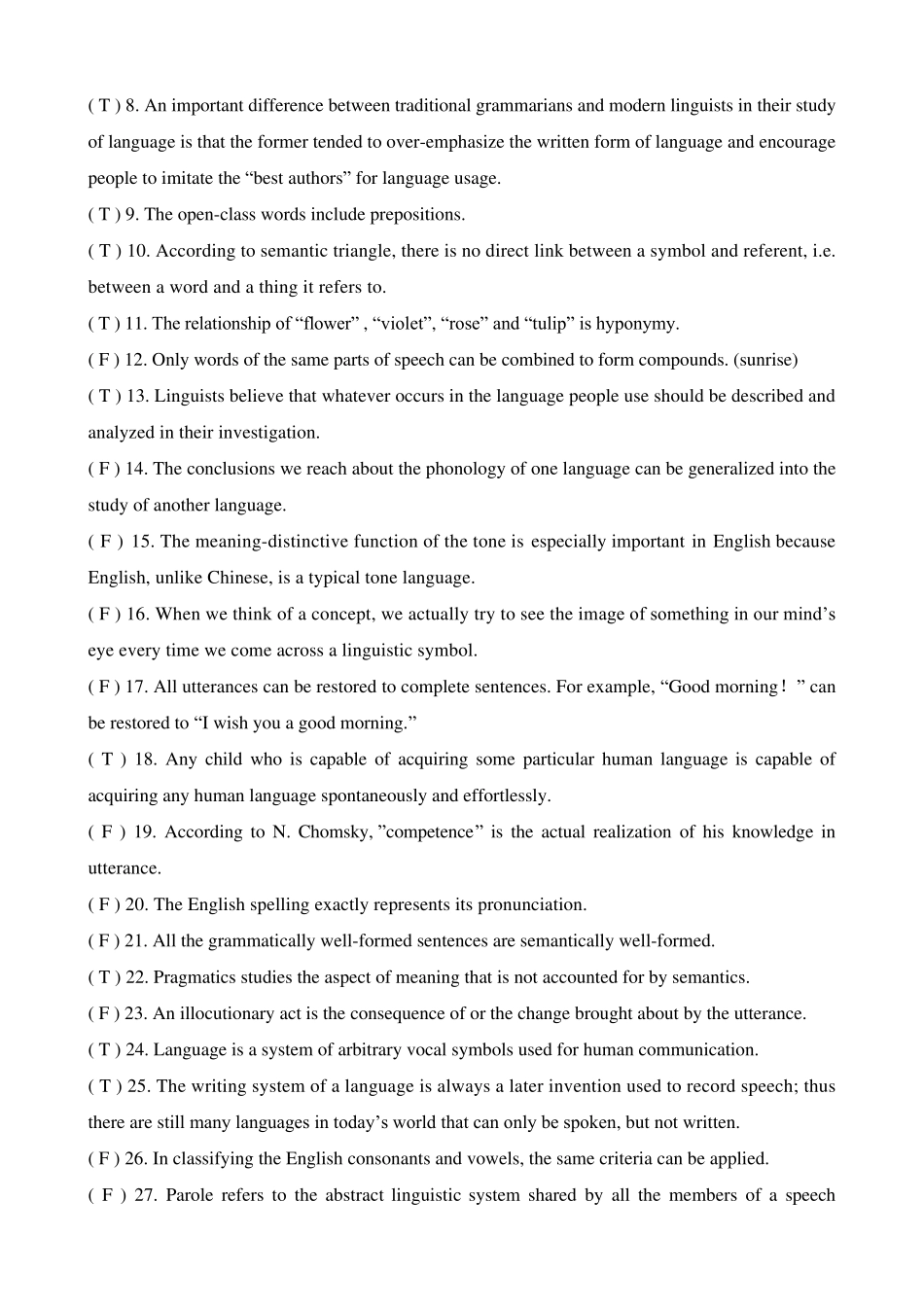I. Directions: Fill in the blank in each of the following statements with one word, the first letter of which is already given as a clue. Note that you are to fill in ONE word only. 1. Clear [1] and dark [ł ] are allophones of the same one phoneme /1/.They never take the same position in sound combinations, thus they are said to be in complementary distribution. (P24) 2. Morphology is the smallest meaningful unit of language. (P32) 3. Consonant sounds can be either voiceless or voiced, while all vowel sounds are voiced. (P16) 4. In making conversation, the general principle that all participants are expected to observe is called the Cooperative principle proposed by J. Grice. (P86-87) 5. Language exists in time and changes through time. The description of a language at some point of time is called a synchronic study of language. (P4) 6. An essential difference between consonants and vowels is whether the air coming up from the lungs meets with any obstruction when a sound is produced. (P18) 7. XP may contain more than just X. For example, the NP “the boy who likes this puppy” consists of Det, N and S, with Det being the specifier, N the head and S the complement. (P46) 9. While the meaning of a sentence is abstract and decontextualized, that of an utterance is concrete and context-dependent. (P70) 11. Psycholinguistics relates the study of language to psychology. It aims to answer such questions as how the human mind works when people use language. (P70) 12. A diachronic study of language is a historical study, it studies the historical development of language over a period of time. (P70) 13. Language is a system, which consists of two sets of structures, or two levels....


